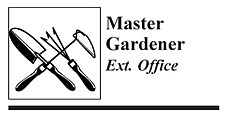September 6, 2007 at 7:26 a.m.
He has written an article on seasonal watering of trees and shrubs. It is not a surprise that watering of trees and shrubs, young and ancient is the most important thing one can do. Professor Johnson states that when water management is ignored, trees and shrubs become stressed, which can lead to their death.
He suggests that one use a soaker hose or watering tape. Most hardware stores, home improvement centers or garden centers have soaker hoses. Watering tape is usually something that is special ordered, but works about the same as a soaker hose. One brand, T-tape, has been used extensively in commercial nurseries and has an excellent track record. Regardless of whether a soaker hose or a watering tape is used to provide irrigation water, they are more efficient than lawn sprinklers.
Newly planted trees and shrubs need water where the roots are, not where they will end up. Water should be supplied by either you or the clouds twice a week for the first growing season. This should continue until the ground is frozen. For the next two to three years, depending on the size of the transplant, supply water at least once per week. Soaker hoses or watering tapes are the best choices for supplying water.
Professor Johnson states that the single most effective way to moderate soil moisture is a generous layer of mulch (preferably organic). The mulch should be spread over the root system. In addition to moderating soil moisture extremes, organic mulches breakdown and continuously add organic matter to the soil. Mulch doesn't make water it conserves water.
Use a minimum of 3-4 inches of coarse organic mulch such as wood chips, but not redwood nuggets. Or, use 2-4 inches of finer mulches such as bark, hulls, and composted leaves. Don't pile the mulch against the stems of the plants. If you annually add a fresh topping of mulch, don't remove the old mulch. When old mulch is removed, all of the fine roots of the trees and shrubs are also removed. Treat your trees and shrubs as a forest or prairie does with annual, light applications of organic materials.
Before mulch is put down, be sure the area is watered. If there is turf around the plants, place five to 10 layers of newspapers over the turf. Soak the newspapers and then apply the mulch. If you use an herbicide, spray carefully avoiding any spray drift to young stems.
Professor Johnson states there are five myths about watering trees and shrubs.
•Watering trees and shrubs is expensive (false). What's expensive is removing diseased, declining, and dead trees.
•Water from soaker hoses or watering tapes only moves downward (false). Soil moisture moves both vertically and horizontally, depending on the soil texture.
•Watering trees and shrubs in the autumn stimulates new, lush growth that will be damaged by winter temperatures (false). Autumn rains are normal and dormancy is a function of temperature and genetics. Autumn droughts encourage cold temperature damage to trees and shrubs.
•Moist soils freeze deeper and get colder than dry soils (false). The truth is just the opposite as mentioned above.
•The more money spent on high tech and fancy watering equipment, the healthier the trees and shrubs will be (false). There is no relationship.
Invest your dollars in conservative watering monitoring. Use soaker hoses, and any other drip technique. I haven't mentioned this before, but Gary Johnson also feels that if you are going to invest any money it also should include a soil probe. A soil probe can measure moisture depth just as a thermometer does for temperature. Remember that the amount of water reaching the roots is the most important thing you can do to help your trees and shrubs.
+++++
PLANT CLINICS: The Monday night plant clinics at the office are done for this year, but you can still talk to a Volunteer Master Gardener at the Lindstrom Farmer's Market, Saturdays, from 8 a.m.-noon on Highway 8 in the St. Bridget's Catholic Church parking lot.
Please note: there is no longer staff at the North Branch Office who can answer gardening questions.
VOICE MAIL: You can leave a question for a volunteer Master Gardener at 651-674-4417. Depending on the volume of calls, they try to respond within a couple of days. During office hours ask for the Master Gardener voicemail, after hours, select ext. 18.
You can also get your question answered on the web at: www.extension.umn.edu/askmg
+++++
UPCOMING CLASSES
Join the Master Gardeners Tuesday, Sept. 25, at 6:30 p.m., for a class on Fall Lawn Care, presented by Master Gardener Donna Tatting. This class will give an overview of basic lawn care practices for all seasons with an emphasis on fall lawn care. We will also discuss lawn care practices that help protect and insure the water quality of our nearby lakes and rivers. The class will be held at the Senior Center in North Branch. You can call 651-674-4417 for more info.
A cutback in staffing has made it necessary for the Extension Office to limit hours of operation. We would suggest that you call ahead to verify that the office is open if you plan to stop by.




Comments:
Commenting has been disabled for this item.